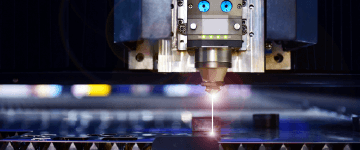December 2, 2022
5 reasons to standardize CNC controls instead of machine tools
 Why on earth would an enterprise as large, complex and geographically diffuse as Southwest Airlines only fly one kind of plane, the 737? The answer is actually relatively simple: Standardization is a powerful force. In the case of Southwest, every pilot can fly every plane in the fleet; any mechanic can fix any plane; any gate attendant can perform the same boarding process at any airport. The list goes on.
Why on earth would an enterprise as large, complex and geographically diffuse as Southwest Airlines only fly one kind of plane, the 737? The answer is actually relatively simple: Standardization is a powerful force. In the case of Southwest, every pilot can fly every plane in the fleet; any mechanic can fix any plane; any gate attendant can perform the same boarding process at any airport. The list goes on.
Standardization is also a versatile strategy. It can be deployed across a variety of organizations and processes. When we talk manufacturing, standardizing streamlines enterprise-level functions, including everything from employee onboarding and equipment maintenance to quoting and process engineering.
Traditionally, machinery–often by brand–has been one of the preferred avenues of standardization in metalworking operations. The changing technology and market landscape, however, is forcing the industry to revisit where standardization efforts and resources are best deployed. Some of the specific factors driving this include:
- The fast transfer of offline simulation data/programs
- Accommodating just-in-time/one-off (JIT) jobs
- Lights-out manufacturing
- Simpler, faster and smaller communication infrastructure
- Increasing demand for smaller, more complex parts
- More powerful, multi-axis machine tools with simultaneous movement
The practice of standardizing CNC controls instead of machine tools (where the choice must be made) is an increasingly valuable one. In this day and age, the potential limitations of standardizing machine tools are far greater than those of standardizing CNC controls. Here are five strong arguments for standardizing CNC controls:
- Operators, technicians and programmers can seamlessly move between an array of machines.
- Interface training is simplified and expedited (new hires perform more advanced work faster) and more people can do it.
- Single-source, remote support helps limit unplanned downtime.
- CNC controls are sophisticated and powerful enough to dramatically enhance efficiency–purchasing multiple controls from one supplier can reduce initial investment.
- Enables complete motion control integration, for superior multi-axis performance and efficiency.
Integrating motion control takes CNC control standardization to another level. Ultimately, parts are what make a business money; the machine tool is just that, a tool, to make parts. The argument is to standardize the elements that drive the machine tool: the CNC, motors, drives, encoders and software.
As we barrel into the middle of the 21st century, it’s our estimation that this is one of the most effective approaches to prioritizing capital investment and organizing a shop.
That begs the question, what type of control is best, or most effective when it comes to standardization. Two key characteristics come to mind. First, an updated, modern interface is important. Today’s young operators, tomorrow’s leaders, are most comfortable with touchscreens, ergonomic keyboards and high-resolution, color, 3D monitors. Second, the control should be upward compatible. In other words, choose a control that has the computing power to handle complex 5-axis motion at maximum speeds.
Of course, not all control builders offer the motion control components or quality of motion control components to unlock the full potential of the approach–especially when it comes to multi-axis machining. We’re proud to be one who does.
If you’re curious how this approach may work for you, whether you’re a machine builder or end user, we are the authority. Contact us today.

